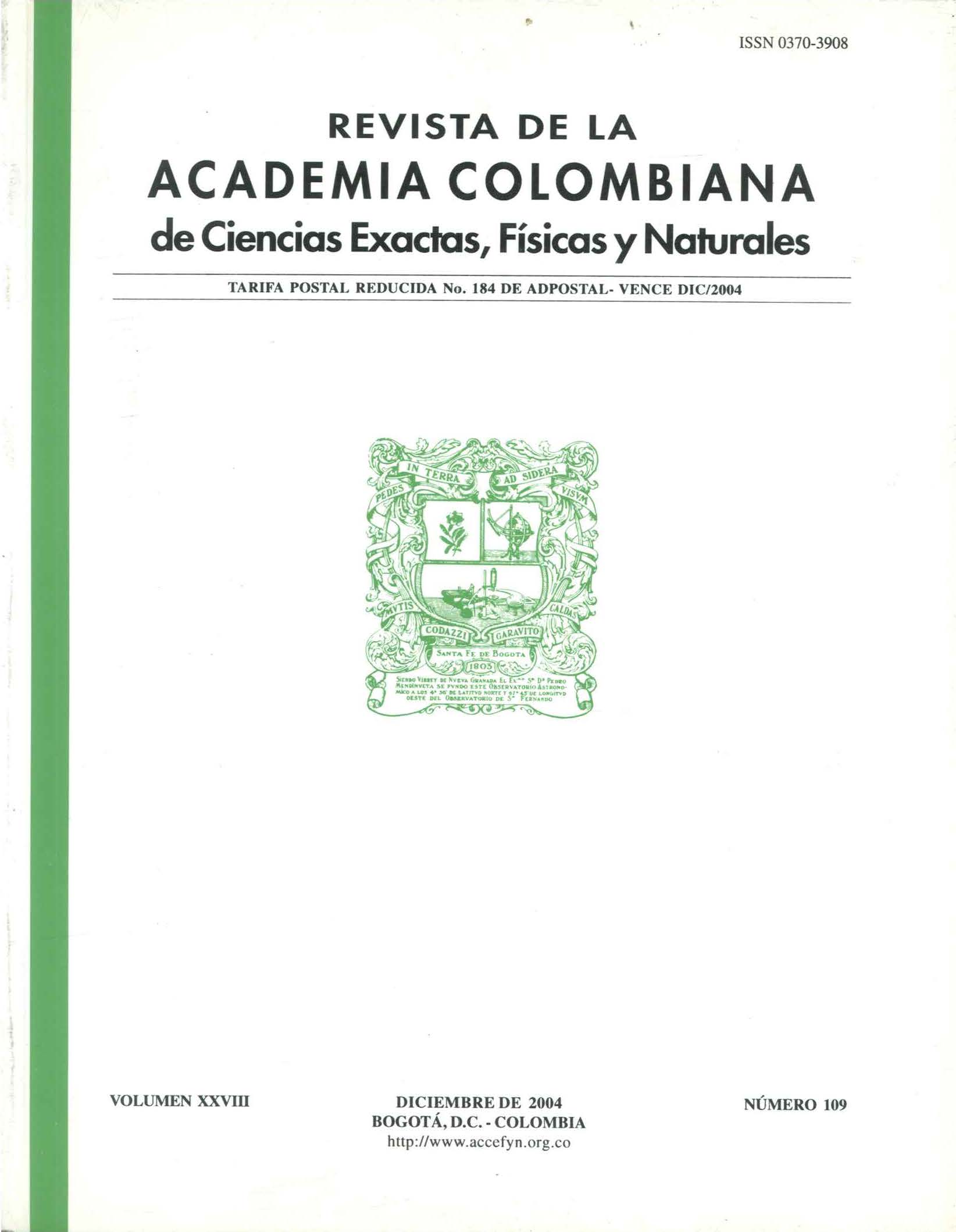Abstract
Oxygen consumption values for Lytechinus variegatus in a 24 hour cycle are reported for the first time in the Colombian Caribbean. The expectation of a circadian rhythm of activity as reflected in oxygen consumption was not confirmed. The ecotrophic role of L. variegatus is briefly reviewed and discussed
Keywords
References
Beddingfield, S.D. & J.B. McClintock. 1998. Differencial survivorship, reproduction, growth and nutrient allocation in the regular echinoid Lytechinus variegatus (Lamarck) fed natural diets. J. Exp. Mar. Biol. Ecol. 226 (2): 195-215
Crisp, D.J. 1984. Energy flow measurements. 284-372. En: Methods for the study of marine benthos. Eds, N. A. Holme y A.D. McIntyre. Blackwell Scientific Publications.
Fergusson, J.C. 1982. Support of metabolism of superficial structures through direct uptake of dissolved primary amines in echinoderms. 345-351. En: Echinoderms Proc. Internat. Conf., Tampa Bay. Ed. J.M. Lawrence. Balkema
Gallo, J. 1985. Contribución al estudio de los equinodrmos del PNNT: I Echinoidea. Programa de Ecosistemas Marinos, Informe Técnico Inderena-Invemar, Santa Marta, 11 pgs.
Garzón-Ferreira, J. 1998. Bahía de Chenge, Parque Natural Tayrona, Colombia. 115-126. En: CARICOM Caribbean coral ref., seagrass and mangrove sites. Unesco.
Greenway, M. 1995. Trophic relationships of macrofauna within a Jamaican seagrass seagrass meadow and the role of the echinoid Lythechinus variegatus (Lamarck). Bull. Mar. Sci. 56 (3): 719-736.
Koch, V. 1999. Epibenthic production and energy flow in the Caete mangrove estuary, North Brazil. ZMT Contributions 6, 97, págs.
Lawrence, J.M. 1987. Echiniodermata. 229-321. En: Animal
Energetics. Volume 2 Bivalvia through Reptilia. Eds. T.J. Pandian y F.J. Vernberg. Academic Press Inc.
McClintock, J.B., T.S. Klinger y L.M. Lawrence. 1982. Feeding preferences of echinoids for plant and animal food models. Bull. Mar. Sci. 32 (1):365-369.
McGlathery, K.J. 1995. Nutrient and grazing influences on a subtropical seagrass community. Mar. Ecol. Prog. Ser. 122 (1-3): 239-252.
Miller, R.J. & K.H. Mann 1973. Ecological energetics of the seaweed zone in a marine bay on the Atlantic coast of Canada. III. Energy transformation by sea urchins. Mar. Biol. 18: 99-114.
Montague, J.R., J.L. Carballo, W.P. Lamas, J.A. Sánchez, E.R. Levine, M. Chacken & J.A. Aguinaga 1995. Population ecology of the sea urchin Lytechinus variegatus in relation to seagrass diversity at two sites in Biscayne Bay: pre- vs. post-hurricane Andrew (1989-1992). Fla. Sci. 58 (2): 234-246.
Moore, H. y B. McPherson 1965. A contribution to the study of the productivity of the urchins Tripneustes sculentus and Lytechinus variegatus. Bull. Mar. Sci. 15 (4): 855-871.
Valentine, J.F. y K.L. Heck 1991. The role of sea urchin grassing sea in regulating subtropical seagrass meadows: evidence from field manipulations in the northern Gulf of Mexico. J. Exp. Mar. Biol.. Ecol. 154 (2): 215-230
Valentine, J.F, K.L. Heck, J. Busby y D. Webb. 1997. Experimental evidence that herbivory increases shoot density and productivity in a subtropical turtlegrass (Thalassia testudinum) meadow. Oecologia 112(2):193-200.

This work is licensed under a Creative Commons Attribution-NonCommercial-NoDerivatives 4.0 International License.
Copyright (c) 2023 Revista de la Academia Colombiana de Ciencias Exactas, Físicas y Naturales





